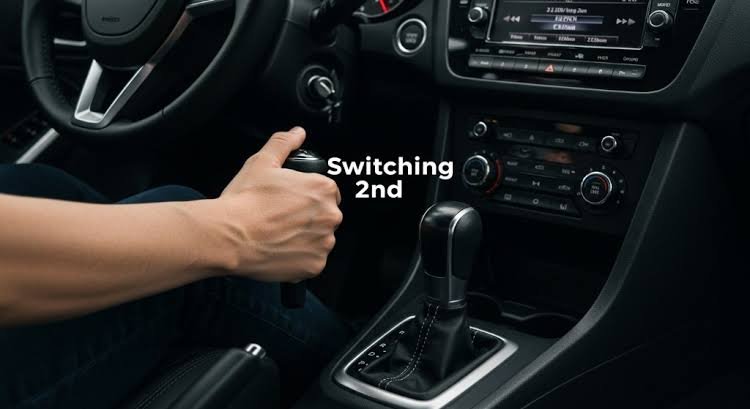Blog
Switching 2nd: The Complete Guide for Smooth and Efficient Gear

Driving a manual transmission vehicle can be rewarding, but it demands skill. Among the most crucial maneuvers is switching 2nd, the moment when you shift from first to second gear. Done correctly, it improves speed, fuel efficiency, and driving comfort. However, done poorly, it can cause jerks, wear down components, or even damage the gearbox.
This guide covers everything you need to know — from the basics to advanced tips — so you can master the art of switching to second gear confidently.
Why Switching 2nd is Important
Switching to second gear may seem like a simple step, yet it plays a vital role in driving performance. In first gear, your car generates high torque for initial movement. However, staying there too long wastes fuel and strains the engine. Transitioning to second gear allows the engine to operate more efficiently while maintaining smooth acceleration.
Understanding Gear Ratios and Their Role
Manual transmissions rely on gear ratios to balance torque and speed.
- First gear offers the most torque but the lowest speed range.
- Second gear reduces torque but increases speed capacity.
This balance ensures that the vehicle moves efficiently without overworking the engine. Therefore, switching 2nd at the right moment is key to keeping the car in its optimal power range.
When to Switch to Second Gear
Timing is everything in manual driving. The best moment to switch to second gear depends on:
- Engine RPM – Most vehicles shift smoothly between 2,000–3,000 RPM.
- Road Conditions – Uphill climbs may require an earlier shift, while downhill driving may allow a later one.
- Vehicle Load – A heavily loaded car might need an earlier switch to maintain torque.
By paying attention to engine sound and speed, you’ll naturally sense the right time for the shift.
Step-by-Step Guide to Switching 2nd Smoothly
- Accelerate in First Gear until reaching the appropriate RPM range.
- Press the Clutch Fully to disengage the engine from the wheels.
- Release the Accelerator smoothly to avoid sudden RPM drops.
- Move the Gear Lever from first to second without forcing it.
- Release the Clutch Gradually while gently pressing the accelerator.
Consistent practice builds muscle memory, making gear changes second nature.
Common Mistakes When Switching 2nd
Even experienced drivers can make errors, such as:
- Shifting Too Early or Too Late – Can cause jerks or strain the engine.
- Incomplete Clutch Press – Leads to grinding gears.
- Excessive Force on the Lever – Risks gearbox damage.
- Holding the Gear Lever – Puts unnecessary pressure on shift forks.
Avoiding these mistakes will extend your vehicle’s lifespan.
Switching 2nd in Different Driving Scenarios
City Driving
Frequent stops mean you’ll switch to second gear often. Gentle acceleration and smooth clutch control are essential for comfort.
Highway Merging
Here, quick yet smooth gear changes are crucial to match traffic speed without over-revving.
Off-Road Conditions
On rough terrain, you may hold first gear longer for torque before switching to second to avoid stalling.
How Clutch Control Affects Switching 2nd
Clutch control is the foundation of smooth gear changes. Poor control can cause:
- Sudden jerks
- Stalling
- Increased wear
To improve, practice balancing clutch release with accelerator pressure. The smoother the coordination, the better the shift.
The Role of Engine Braking
While downshifting is often associated with slowing down, engine braking can also influence how you switch to second gear. If you’re decelerating to a lower speed, downshifting to second before a turn can provide better control without riding the brakes.
Switching 2nd for Fuel Efficiency
Properly timed shifts help maintain low fuel consumption. Short-shifting — switching to a higher gear sooner — can save fuel in calm driving situations. However, doing this too early can strain the engine.
Advanced Tips for Perfecting Switching 2nd
- Listen to the Engine – Experienced drivers shift by sound rather than the tachometer.
- Use Double Clutching – Helpful in older cars without synchronized gears.
- Heel-and-Toe Technique – Smooths downshifts for sporty driving.
Signs You’re Not Switching 2nd Correctly
Look out for:
- Gear grinding noises
- Sudden RPM spikes or drops
- Vehicle lurching forward or backward
- Clutch burning smell
Addressing these early can prevent costly repairs.
Maintenance Tips for Smooth Gear Changes
Regular maintenance ensures your transmission performs well:
- Change transmission fluid as recommended.
- Keep clutch components in good condition.
- Check for worn gear linkages.
Switching 2nd in Electric vs. Manual Cars
Electric vehicles often don’t require gear changes, but manual EV conversions may still use a gearbox. In such cases, switching 2nd follows similar principles but with instant torque, so timing feels different.
Safety Considerations
Always keep both hands on the wheel except when shifting. In traffic, plan your gear change ahead to avoid panic shifts that can compromise safety.
FAQs About Switching 2nd
1. How fast should I go before switching to 2nd?
Generally between 10–20 mph, depending on your car’s gearing.
2. Can I skip from 1st to 3rd gear?
Yes, but it may strain the engine if done improperly.
3. Why does my car jerk when switching to 2nd?
It’s often due to poor clutch control or incorrect timing.
4. Is it bad to hold the gear lever?
Yes, it can wear out gearbox components prematurely.
5. How do I know if my clutch is worn?
Signs include slipping gears, a burning smell, and difficulty engaging gears.
6. Do I need to switch 2nd uphill differently?
Yes, you may need to rev higher in first before switching to maintain power.
Conclusion
Mastering switching 2nd is about timing, control, and practice. By understanding your car’s mechanics, listening to engine cues, and avoiding common mistakes, you can ensure smoother, safer, and more efficient driving. Whether you’re navigating city traffic or cruising on highways, a well-executed shift makes all the difference.
-

 Blog3 months ago
Blog3 months agoKate Garraway’s New Partner 2024: A Fresh Chapter Begins
-

 Health3 months ago
Health3 months agoCandizi – The Ultimate Game-Changer in Wellness and Lifestyle
-

 Food3 months ago
Food3 months agoCalamariere: A Tasty Seafood Delight That Shines
-

 Blog3 months ago
Blog3 months agoUnited Airlines Flight UA770 Emergency Diversion
-

 Blog3 months ago
Blog3 months agoTractor Supply Sales Associate Job Description (2025 Update)
-

 Blog3 months ago
Blog3 months agoPowerful 7-Step Guide to هنتاوي com: Boost Organic Traffic Now
-

 Technology3 months ago
Technology3 months agoExploring the Power and Potential of the 084.0-h8po Model
-

 Culture3 months ago
Culture3 months agoHis Majesty NWBKA: A Symbol of Royalty, Culture, and Legacy
